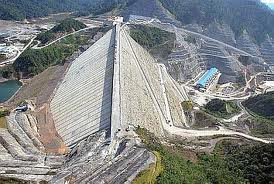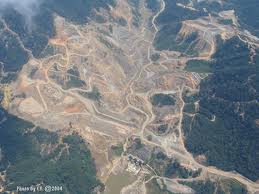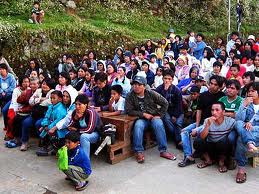
News publications have been chewing over the figures as Bakun waits to be flooded and have come to some inevitable, long-predicted conclusions.
Firstly, the Dam has no genuine economic purpose. Sarawak already has more electricity than its impoverished population can afford to use and the plans to send it to Malaysia by undersea cable was a fantasy by technology-illiterate ministers.
Secondly, the dam will actually make electricity more, not less expensive for ordinary Sarawakians, as existing power plants will be shut and Sarawak Hidro are desperate to claw back some of the RM 7.3 billion costs.
Thirdly, the public worker pension funds, which were arm-twisted by politicians into funding the dam to the tune of RM 5.75 billion, are now left facing an appalling loss. This means either a whole generation of hard-working public servants (teachers, nurses, clerks, firemen etc.) will now lose their savings for old age, or the Malaysian taxpayer (the next generation of workers) will have to find the extra money to bail them out.
Pensioners’ loss is Taib family gain
![bakun2[1]](/wp-content/uploads/imgcache/2010/09/pImg_d63ae6db9b48f3cc0e08f59714db6a88.jpg)
- plenty of cement and steel
Therefore the all-round conclusion has been that Bakun is a monstrous, multi-billion dollar disaster. Southeast Asia’s greatest ‘White Elephant’ foisted onto Malaysia by Sarawak’s ‘Chief Executive Officer’ Abdul Taib Mahmud. Perhaps, it is speculated, at least tourists will come to visit such an appalling example of state planning gone spectacularly wrong?
However, these commentators are neglecting to point out that from the point of view of Mr Taib’s personal finances and those of the Taib family, the Bakun Dam has been a stunning success.
Much of the RM 5.75 billion siphoned out of the Employees Provident Fund (EPF) and Kumpulan Wang Persaraan (KWAP) by this project has gone gushing straight into the Taib bank accounts – and then presumably straight on out of the country to fund their private foreign investments.
CMS saved from bad business judgements by Bakun
Researchers have long since detailed how it was the decision to revive the Bakun Dam project, after it was shelved during the Asian Financial Crash, that rescued Cayha Mata Sarawak (CMS), the business the Taib family ‘privatised’ from the state into their own pockets, in the late 1990s.
By 1999, CMS, which had over-stretched on ambitious projects, was facing terrifying losses of RM 787 million. The Chief Minister (whose late wife and two sons owned most of the shares of this ‘public’ company) was even more alarmed as the share price collapsed as a result. The ‘CEO of Sarawak’ was facing personal bankruptsy, since most of his family company’s borrowings were based on the value of these CMS shares.

So it was the political decision by the Malaysian government to pour RM 1.6 billion of taxpayers’ money into Bakun (a sum which has since escalated to 7.5 billion and rising) that saved the Taibs’ from ruin (and kept BN in power in Sarawak). Everyone knew that the Chief Minister would award his own company the lions share of the contracts for this glorious mega-project (CMS specialises in producing cement and steel) and that the company would go from strength to strength.
Endless profit to be made
The Chief Minister does not miss a trick when it comes to making money and Bakun has gone on to provide wonderful further opportunities for abuse of public trust. Thus, his own company CMS has now gone on to further establish itself as the biggest private customer of the publicly owned venture that it built.
The company has done a deal with Rio Tinto Zinc (despite the horror of environmentalists) to build a vast aluminium smelter to soak up Bakun’s excess power. This consortium is currently playing hardball with Sarawak Hidro, the Federal government body in charge of the dam, to get a preferential deal for electricity. This at a time when Taib is negotiating on behalf of the State of Sarawak to buy the project off the Federal Government.
This means clever Taib has set himself up as the biggest client of the state venture that, as Finance Minister and Chief Minister, he is going to be entrusted with managing of behalf of the interests of the taxpayer! As far as conflict of interest goes that is about as big as it gets!

Meanwhile, Sarawak Report wonders whether his business partner, Rio Tinto Zinc, has considered dusting off its own ethics book on this issue, and leafing through to the section on doing business with corrupt tyrants?
Clearly, the opportunity to move politically sensitive and highly polluting aluminium smelting plants out of Australia, where the mineral is mined, and into Sarawak is tempting. Taib, of course, plans to cover the whole of this once pristine rainforest state with filthy foreign industries to foul up what remains of the dammed up river basins – the so-called Sarawak Corridor of Energy.
However, while the Chief Minister regards himself impervious to criticism and bullet proof at the ballot box (no fool like an old fool), the business executives at Rio Tinto have learnt the hard way about the dangers of deals such as these. Their local back yard environmentalists in Australia may be happy to see them move off, but the global environmentalists will be only too ready to hold such actions to account. And the native peoples of Sarawak are not that happy either, to put it gently.

No benefit to Sarawak
Citizens of Sarawak have also learnt the hard way that the jobs from dirty industries such as these will go to foreign workers and the money will go straight back out again. They know that ‘Progress and Development’ , Taib-style means environmental destruction, land seizures and poverty for the many and vast riches for….. well Taib.
All of which explains why the multi-billion dollar plan to go on building pointless dams across the whole of the rest of Sarawak, displacing tens of thousands more indigenous people and destroying vast areas, while appearing to be the strategy of a mad man makes enormous economic sense personally to Abdul Taib Mahmud.
This is because China has agreed to invest US $11 billion to do it. Most of that money he reasons will go to him and after that who cares that the people of Sarawak will be in debt to China and therefore under China’s control for ever more?
